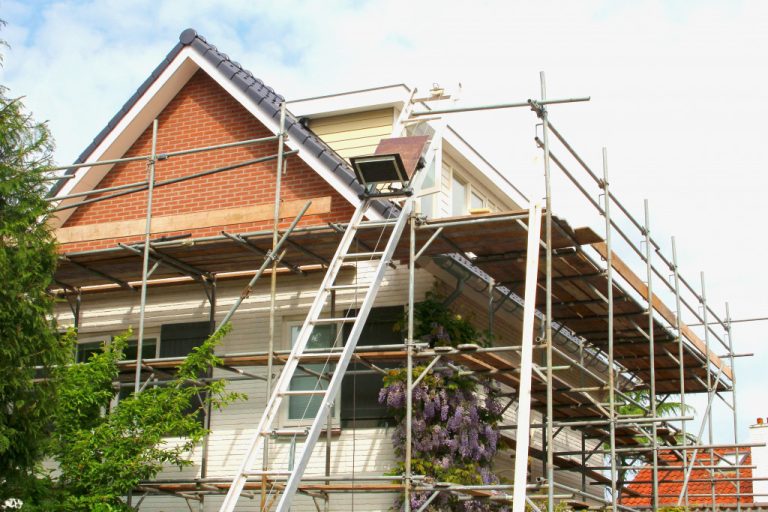- High-quality construction materials, including roofing underlayment, cement, and insulation boards, are crucial for weatherproofing your home.
- Waterproof membrane application is an important strategy in preventing moisture intrusion from rain or groundwater.
- Watertight waterproofing paint adds a protective layer to your home, enhancing its resistance against moisture and dampness.
- Insulation boards in walls, floors, and roofs regulate indoor temperatures and protect against heat transfer and moisture damage.
When constructing your dream house, effective weatherproofing strategies are key to ensuring its longevity and durability. This article will explore the top strategies to weatherproof your home, protecting it against extreme weather conditions and the elements. This information will be invaluable to making your home a comfort zone and fortress against inclement weather.
Utilize High-Quality Materials
High-quality materials are foundational to weatherproofing your home. The quality of materials used in construction can determine how well your home withstands harsh weather conditions. Here are some tips for you:
Quality Roofing Underlayments
Quality roofing underlayments provide extra protection between your home and the elements. These underlayments are installed beneath the shingles or tiles and are a secondary barrier against rain, snow, and wind. Opting for high-quality, durable materials can significantly enhance the overall weather resistance of your home’s roof.
However, the effectiveness of roofing underlayments depends largely on the installation process. If not installed correctly, they could be a weak point in your home’s defense against the elements. Therefore, hiring reputable roofing contractors is a worthwhile investment.
These professionals have the expertise and knowledge to accurately install underlayments, ensuring that they perform optimally and provide your home with the best possible protection against weather damage.
Use of Cement

Cement plays a critical role in weatherproofing your home. It’s the primary ingredient in concrete, used in constructing various house sections, including the foundation, walls, and driveways. High-quality cement ensures a sturdy, durable structure that can withstand adverse weather conditions such as heavy rainfall, severe winds, and temperature fluctuations.
Moreover, cement is also a key component in plaster, which acts as a protective layer against moisture for interior and exterior walls. The plaster can prevent seepage and dampness, maintaining the integrity of the walls and ensuring a healthy living environment. Therefore, high-grade cement can significantly bolster your home’s weather resistance, offering long-term protection and reducing maintenance costs.
Waterproof Membrane Application
Waterproof membrane application is another essential strategy for weatherproofing your home. These membranes are applied to exterior walls and the foundation of your house, forming a barrier that prevents moisture intrusion from rain or groundwater. They are especially vital in regions with high rainfall or water tables.
The membranes work by repelling water while allowing vapor to pass through, keeping the interior of your home dry and preventing conditions that could lead to mold growth. They come in various forms, including liquid-applied membranes, sheet-based membranes, and cementitious waterproofing, each with advantages and suitable applications.
Hiring a skilled professional for the application ensures the membrane adheres properly and performs effectively. Despite the upfront cost, investing in a quality waterproof membrane can save substantial repair costs in the long run by protecting your home’s structure from water damage.
Utilize Watertight Waterproofing Paint
Watertight waterproofing paint adds additional protection to your home, enhancing its resistance against moisture and dampness. This specialized paint creates a waterproof barrier on the surfaces it’s applied to, preventing water ingress and protecting the underlying structure.
It can be applied to interior and exterior walls, basements, and other areas prone to dampness or water exposure. Besides offering water resistance, waterproofing paint provides a clean, finished look to the surfaces, enhancing your home’s aesthetic appeal.
It is available in various colors and finishes, allowing you to choose one that complements your interior or exterior décor. Apply the paint evenly and allow it to dry completely for maximum effectiveness. While it’s possible to apply this paint yourself, hiring a professional to ensure proper application might be prudent for larger or more complex projects.
Insulation Boards

Insulation boards provide additional protection for your home and play a pivotal role in weatherproofing. Manufactured from various materials, including foam, fiberglass, or cellulose, insulation boards effectively regulate indoor temperatures, ensuring your home remains cool in summer and warm in winter.
They are installed in various parts of the house, including the walls, floor, and roof, and act as a barrier against heat transfer. This enhances the comfort of your home and reduces energy costs by improving the efficiency of your heating and cooling systems.
Furthermore, some insulation boards offer excellent resistance against moisture, helping to safeguard your home against dampness, mold growth, and other related issues. By incorporating high-quality insulation boards into your building’s design, you fortify your living space, making it more energy-efficient and resistant to harsh weather.
Soil Inspection and Foundation Design
A thorough soil inspection and an appropriate foundation design are crucial to weatherproofing your home. The soil type on your property can significantly affect your home’s stability, particularly in extreme weather conditions. For example, expansive soils can expand or shrink with changes in moisture levels, potentially causing foundation movement and damage.
Conducting a comprehensive soil inspection before construction begins is essential to mitigate this risk. Based on the findings, a suitable foundation design can be chosen. The foundation, being the part of your home in direct contact with the ground, bears the brunt of weather conditions and the weight of your home.
Therefore, opting for a foundation design that accounts for the specific properties of your soil type and local weather patterns can significantly enhance your home’s resistance to the elements, ensuring its stability and longevity.
In conclusion, taking the necessary steps to weatherproof your home is an investment that can pay off in the long run, protecting your home from damage and potentially saving you from costly repairs. Remember, your dream home deserves nothing less than the best protection.

